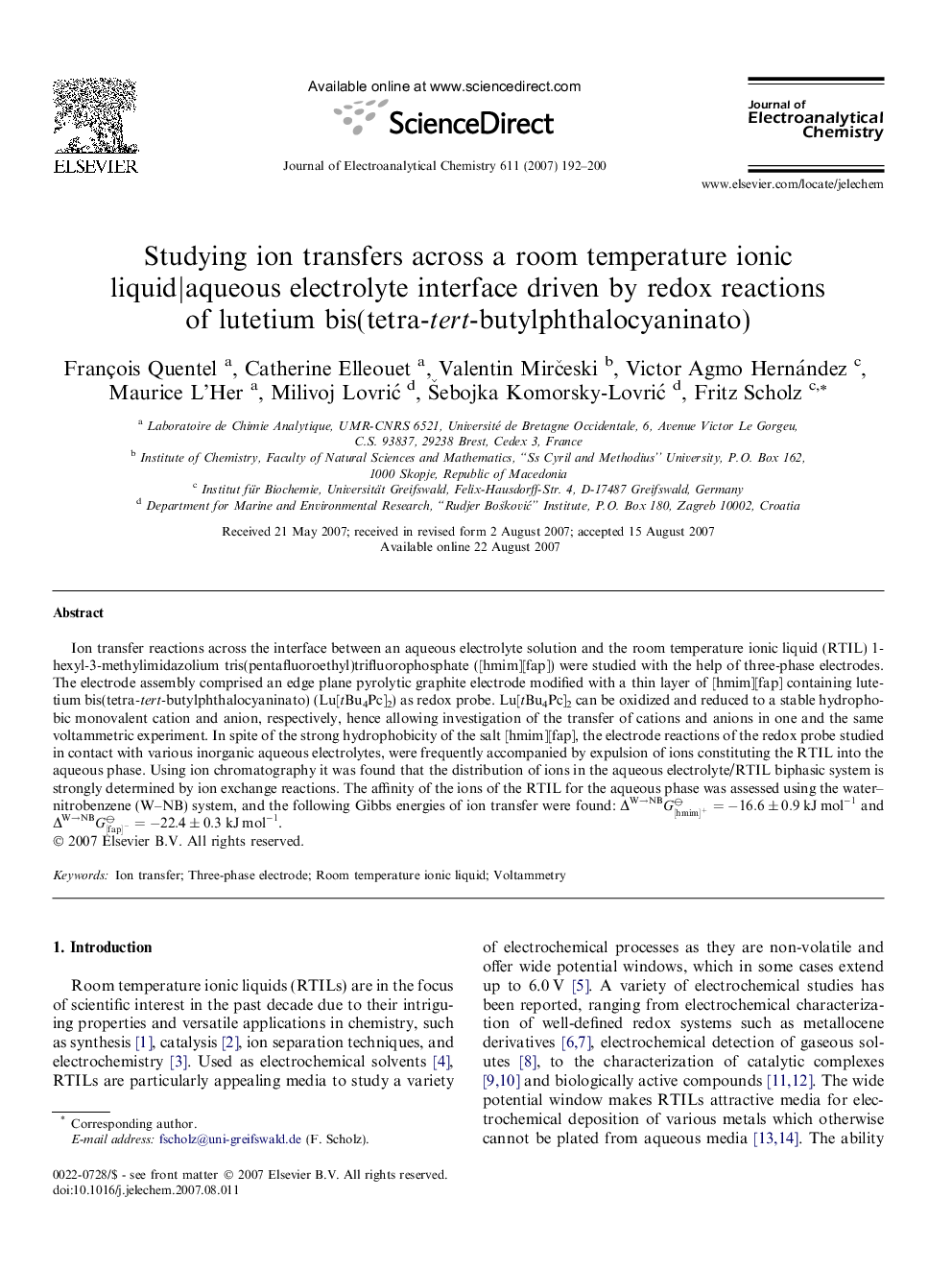| Article ID | Journal | Published Year | Pages | File Type |
|---|---|---|---|---|
| 220697 | Journal of Electroanalytical Chemistry | 2007 | 9 Pages |
Ion transfer reactions across the interface between an aqueous electrolyte solution and the room temperature ionic liquid (RTIL) 1-hexyl-3-methylimidazolium tris(pentafluoroethyl)trifluorophosphate ([hmim][fap]) were studied with the help of three-phase electrodes. The electrode assembly comprised an edge plane pyrolytic graphite electrode modified with a thin layer of [hmim][fap] containing lutetium bis(tetra-tert-butylphthalocyaninato) (Lu[tBu4Pc]2) as redox probe. Lu[tBu4Pc]2 can be oxidized and reduced to a stable hydrophobic monovalent cation and anion, respectively, hence allowing investigation of the transfer of cations and anions in one and the same voltammetric experiment. In spite of the strong hydrophobicity of the salt [hmim][fap], the electrode reactions of the redox probe studied in contact with various inorganic aqueous electrolytes, were frequently accompanied by expulsion of ions constituting the RTIL into the aqueous phase. Using ion chromatography it was found that the distribution of ions in the aqueous electrolyte/RTIL biphasic system is strongly determined by ion exchange reactions. The affinity of the ions of the RTIL for the aqueous phase was assessed using the water–nitrobenzene (W–NB) system, and the following Gibbs energies of ion transfer were found: ΔW→NBG[hmim]+⦵=-16.6±0.9kJmol-1 and ΔW→NBG[fap]-⦵=-22.4±0.3kJmol-1.
